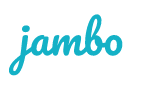
Aunque es posible que hayas oído hablar de personas que intentan utilizar un CRM para la gestión de sus grupos de interés, ¿sabías que existe un software creado específicamente para la gestión de grupos de interés? Se llama software de gestión de las relaciones con los grupos de interés (SRM).
¿Cuál es la diferencia entre un CRM y un SRM?
Aunque ambos sistemas pueden ayudar a almacenar y organizar datos básicos como la información de contacto, en general ayudan a los usuarios a lograr objetivos muy diferentes.
CRM son las siglas de Customer Relationship Management (gestión de las relaciones con los clientes) y está diseñado para ayudar a los usuarios a gestionar sus clientes y ventas.
SRM significa Stakeholder Relationship Management, y un SRM está diseñado para ayudar a los usuarios a gestionar la información de sus partes interesadas y las relaciones con ellas.
¿Qué es el software de gestión de las relaciones con los grupos de interés (SRM)?
El software de gestión de las relaciones con las partes interesadas (SRM) está diseñado para ayudarle específicamente a gestionar todas sus relaciones y comunicaciones con las partes interesadas.
El software SRM es un lugar centralizado para almacenar toda la información relacionada con las partes interesadas. Esta información puede incluir datos de contacto de las partes interesadas, registros de participación, problemas de las partes interesadas, compromisos, informes y otras notas relacionadas con las partes interesadas.
Con una SRM de calidad, puede asegurarse de que la información sobre las partes interesadas está organizada y es accesible, se pueden realizar búsquedas en ella y es fácil de entender, de modo que puede centrarse en establecer relaciones significativas y de confianza con las partes interesadas para obtener mejores resultados en los proyectos.
Para más información, consulte nuestra completa guía sobre el software de gestión de las relaciones con los grupos de interés
4 razones por las que equipos de todos los sectores eligen un SRM en lugar de un CRM para la gestión de las partes interesadas
1. Sin costosas personalizaciones ni cargos ocultos
Intentar que un CRM funcione para la gestión de las partes interesadas puede parecer una opción rentable si ya está utilizando un CRM para otro fin. Sin embargo, los CRM están pensados para gestionar clientes y ventas, no grupos de interés. No estás vendiendo a tus grupos de interés; estás interactuando con ellos, así que no tiene sentido utilizar un software de ventas para la gestión de grupos de interés.
Como un CRM no está diseñado para la gestión de las partes interesadas, es probable que tenga que gastar más dinero para tratar de personalizar el software para satisfacer sus necesidades, lo que puede resultar caro rápidamente.
Alternativamente, elegir un SRM le ayudará a asegurarse de que tiene el software adecuado diseñado para satisfacer sus necesidades y adaptarse a su organización, especialmente si selecciona un SRM comprometido con la actualización periódica del software con nuevas funciones centradas en mejorar la gestión de las partes interesadas. Además, utilizar un SRM con un equipo de éxito del cliente que conozca bien la gestión de las partes interesadas le ayudará a asegurarse de que el software está configurado para satisfacer sus necesidades sin cargos ocultos ni personalizaciones complicadas que suelen verse en los CRM.
2. Mayores índices de adopción de datos por parte de los usuarios
Al utilizar un CRM para la gestión de las partes interesadas, es probable que se reduzcan los índices de adopción por parte de los usuarios debido a la sobrecarga de funciones centradas en los clientes y las ventas en lugar de en la gestión de las partes interesadas. Las interfaces de usuario complicadas también complicarán innecesariamente los procesos y la comprensión del funcionamiento del software por parte del equipo. En última instancia, cuando el software es complicado de usar o confuso de entender, los equipos evitarán usarlo, lo que se traduce en esas tasas más bajas de adopción por parte de los usuarios. Cuando el equipo evita el software, es probable que haya lagunas en los datos porque la información de las partes interesadas no se introduce de forma coherente en un software centralizado y accesible, lo que expone el proyecto a riesgos aún mayores.
La elección de un SRM con flujos de trabajo optimizados para satisfacer las necesidades de gestión de las partes interesadas de su organización garantizará una experiencia de usuario mejor y más agradable para su equipo, lo que aumentará la probabilidad de que utilicen el software de forma constante. Con todo su equipo introduciendo datos en un SRM organizado, puede estar seguro de que tendrá acceso a todos sus datos cruciales para que usted y su equipo puedan recopilar actualizaciones rápidas y valiosas sobre sus relaciones con las partes interesadas y los proyectos.
¿Quiere saber más sobre la experiencia del usuario en un SRM? Consulte nuestro blog.
3. Entender a las partes interesadas para mejorar los resultados del proyecto
Para establecer esas relaciones cruciales con las partes interesadas, es necesario comprenderlas y conocer sus puntos de vista sobre los proyectos y la organización.
Como un CRM no tiene módulos centrados en los grupos de interés que organicen todos los datos de los grupos de interés (como comunicaciones, problemas o compromisos), es difícil dar sentido a la información de los grupos de interés para saber qué les preocupa, lo cual es contraproducente, ya que comprender a los grupos de interés es vital en la gestión de los grupos de interés. A diferencia de CRM, algunos SRM también tienen opciones para ver los datos de los grupos de interés con un enfoque de proyecto, que se alinea mucho mejor con muchos proyectos y programas de participación de los grupos de interés y hace que el seguimiento y la elaboración de informes sea mucho más fácil para sus equipos.
Un SRM está diseñado para organizar fácilmente toda la información sobre las partes interesadas. Tanto si se sumerge en el perfil de una parte interesada antes de su próxima reunión para obtener información esencial sobre la parte interesada con la que se va a reunir como si ejecuta un informe exhaustivo de todos los datos registrados sobre una (o varias) partes interesadas, estará rápidamente actualizado y podrá extraer información sobre lo que les preocupa en función de lo que hayan compartido previamente con usted o su equipo. Tener acceso a esta información puede ayudarte a rellenar lagunas de conocimiento y a centrar tu mensaje, de modo que interactúes de forma respetuosa y relevante, lo que te permitirá demostrar que estás escuchando sus puntos de vista para generar una confianza más vital entre las partes interesadas y mejorar las relaciones.
Para saber más sobre cómo un SRM puede ayudarle a entender a sus grupos de interés, visite nuestro blog.
4. Manténgase al tanto de los problemas y reduzca los riesgos de su proyecto
Con los problemas de las partes interesadas, no es raro que un problema permanezca abierto durante meses, o incluso años, ya que algunos pueden tardar bastante tiempo en resolverse. Sin un software fácil de usar que organice toda la información sobre las partes interesadas, un problema puede caer fácilmente en el olvido, destruir la confianza de las partes interesadas y aumentar los riesgos del proyecto.
Al elegir un SRM con una matriz de materialidad y una línea de tiempo de los problemas, que muestra interacciones específicas en torno a cómo se está trabajando hacia una resolución (ambos disponibles en nuestro SRM, Jambo), puede mantener todos sus problemas organizados y accesibles, independientemente de cuánto tiempo han estado abiertos mientras prioriza los problemas de mayor riesgo para proteger mejor sus proyectos y trabajar más eficazmente con sus partes interesadas.
Para más información sobre las diferencias entre SRM y CRM, visite nuestro blog.
Por qué es importante elegir el software de gestión de las relaciones con las partes interesadas adecuado
Si bien un SRM es la herramienta adecuada para la gestión de las partes interesadas, las diferentes opciones de SRM del mercado tendrán diversas características, opciones de soporte y ofrecerán una experiencia de usuario única. Para sacar el máximo partido del software SRM en la gestión de las partes interesadas, debes elegir la opción que mejor se adapte a tus objetivos y a tus equipos para garantizar el éxito.
Cómo elegir el mejor SRM
Para elegir el mejor SRM, tendrá que empezar por hacer una lista con su equipo. Anote todo lo que le gustaría que le ofreciera su SRM y, a continuación, utilice esta lista para empezar a buscar opciones en el mercado. Una vez que tenga algunas opciones potenciales, le recomendamos que vea una demostración del software para evaluar si se ajusta a las necesidades de su equipo o a sus proyectos.
Si está pensando en empezar a utilizar un SRM, descargue nuestra lista de comprobación gratuita con consejos sobre lo que debe buscar en un SRM. Esta lista le dará varias características y opciones a considerar y ayudará a su equipo a entender lo que un SRM podría ofrecer a su organización.
Próximos pasos
Si desea simplificar y organizar sus esfuerzos de gestión de las partes interesadas de la forma más rápida y sencilla, elegir un SRM en lugar de un CRM tiene sentido. Para saber cómo decir adiós a las hojas de cálculo, ¡consulta nuestro eBook gratuito!











